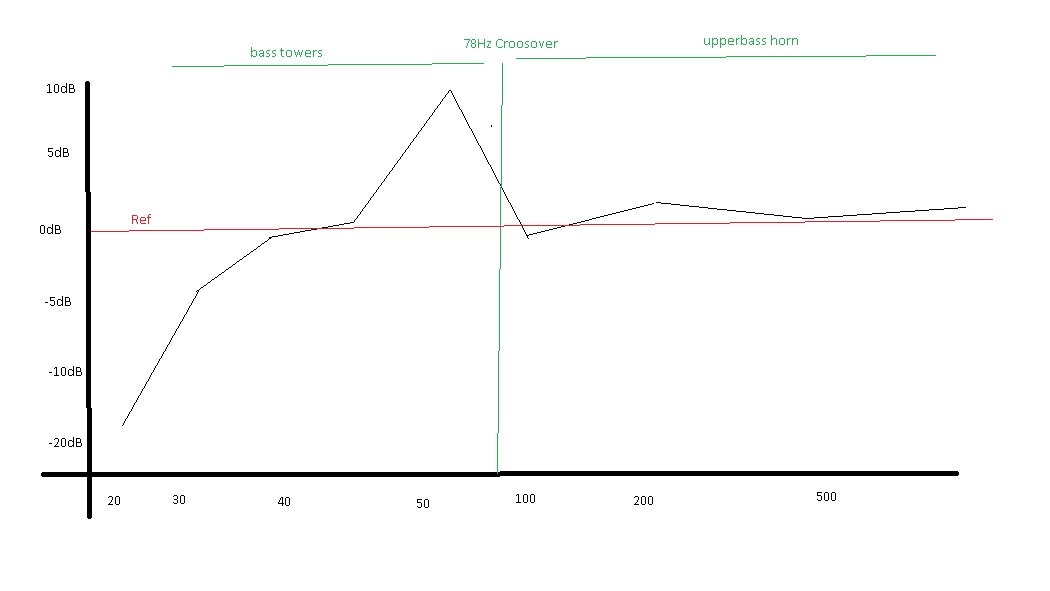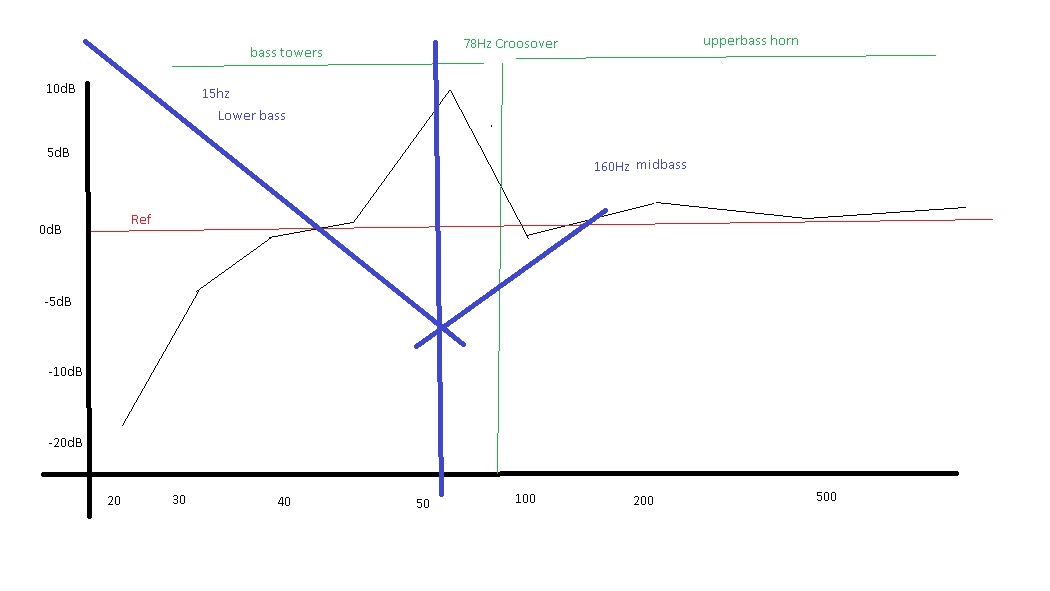|
|
Romy the Cat


Boston, MA
Posts 10,132
Joined on 05-28-2004
|
Post #:
|
128
|
|
Post ID:
|
22808
|
|
Reply to:
|
22807
|
|
|
|
|
Two of my local audio folks asked me to put online my thoughts
process about my listening room. Here are some basics. Yesterday, messuring my
room I got the following response in lower octaves. That is a typical response in
rondom rooms, or what audio people have in 80% or all cases.

The room ironically sounds with “good bass” and I had last
night an audio friend visited me and he did not complain about bass. I am not kidding,
it is “enough bass”. Now we are going
into quality of bass. Just looking at the response (in reality it is +12dB at
50Hr) and correlating with what is auditable it is not hard to recognize that
system has tendency to produce one generic bass note. The diversity of all bass
notes had the same “coloration” or rather the same unified common characteristics.
That is obviously not good but why my last night friend did not complain about
bass? Well, there is an explanation for that. I played to him mostly jazz and
what he asked me to play to him classical muse I plays an adagio with no bass.
The jazz music by nature pretty much has very few bass notes and they are all
the same to begin with. In addition” properly reproduced 50Hz is not bad thing.
It is not ported crap with marble driver but nice 6 drivers array with very linear
motors, driver with good DSET – it is ended very nice sounding. Still. We know
that we have in bass a very strong harmonic coloration. How to deal with it? Obviously
we need to linearize the response; we need to get extension down to teen hertz,
and we need to get VERY accurate amount of upper and mid bass – something that
to a great degree identifies high end audio reproduction. There is a key in all
of it – the above mentioned things need to be done by proper means, by natural
way, not to fighting with the room but using the room as a friend rather than a
foe.

Well, if you look at the image just above then it briefly
depicts the plan how I would like to start attacking the problem. I declare
50Hz as a dangers zone and I will wright low-pass and high-pass filters against
50Hz using the transitional slopes, offsetting the natural room problem by decaling
filter slopes. On the left of the 50Hz I think I will implement 15Hz
18db/octave filter, which shall fill the room with lower bass and will arrive flat
or near flat at 50Hz. I plan to use my line arrays for this channel and in
order this filter to work I would need to drive a lot of power over it, so I would
need over 100W at least. On the right from 50hz it will be a mid-bass channel probably
from sub 150hz. That would be tricky as the filter shall die at 50Hz with minus
10dB. So I would need to play with it and figure out how not to you high order
roll off. I think I would drive it with Milq’s bas channel, it means it needs
to be over 100dB sensitive. I do not have a decision now about topology of the channel.
The midbass horn would be nice but I do not know if I can afford to do it
time-wise. I line array with 15” vintage driver might work well and would not
be expletive, also it would be response tweakable, not like horn. Anyhow, in
context of what I said above I am contemplating my options.
What is very important to observe in all of it is that I do
not fight with the room but I rather USE the room in my design objective, that
is one of my Macondo Axioms and I would like this to me the lesson of this
post.
Rgs, Romy the Cat
"I wish I could score everything for horns." - Richard Wagner. "Our writing equipment takes part in the forming of our thoughts." - Friedrich Nietzsche
|
|
|